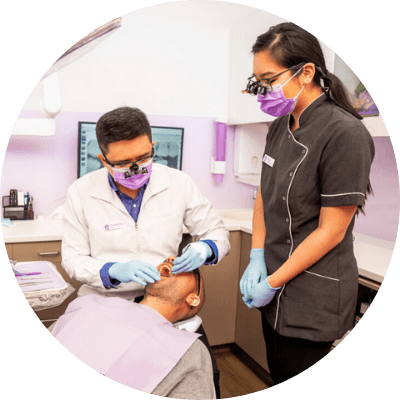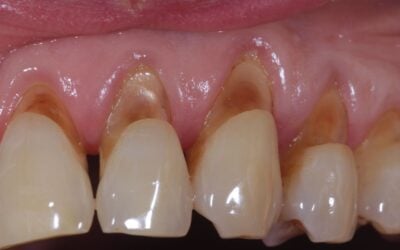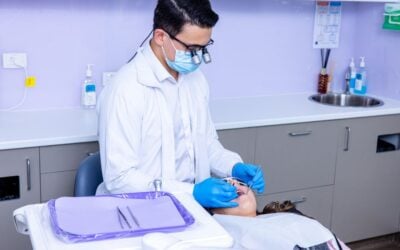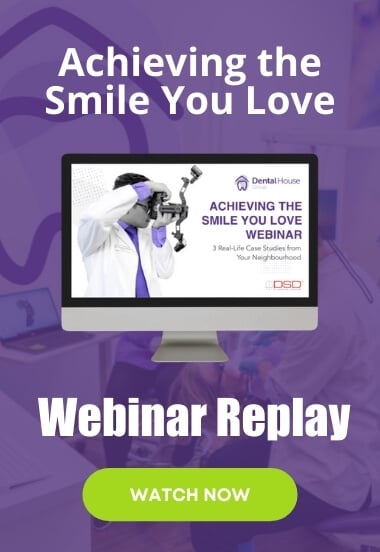New Tooth Decay Treatments: From Biofilm to SDF & Regenerating Teeth
New Tooth Decay Treatments: From Biofilm to SDF & Regenerating Teeth

Published in the Journal of Microbiological Methods, aimed to prove that biofilms could adequately simulate tooth decay and behave similarly to human teeth when treated with fluoride, a Canadian research team has a method of simulating tooth decay that allows new treatments to be tested with minimal expense.
The team from the University of Saskatchewan (USask) used a human saliva-based dental biofilm – grown to mimic oral bacteria – to simulate dental plaque and cavities. It was exposed to sugar solutions that broke down the film in the same way tooth enamel is compromised during the formation of a cavity.
Fluoride was applied to test how the biofilm responded to the typical preventive treatments used by dental professionals in the regular therapies of tooth decay.
It sounds like a big so-what, really, until you consider that this study validated accurate biofilm testing for the development of dental treatments, without the hefty price tag that accompanies any research. The bonus is that potentially expensive treatments can be tested in small amounts – prior to this discovery, they’d be unlikely to be tested at all.
Since the validation of the model, the same research team has used it to assess the potential of bioengineered salivary proteins in the prevention and treatment tooth decay.
From expensive treatments comes the affordable version. We know this. Think pharmaceuticals, air travel, technology, surgical procedures, electric cars.
Whether it be because of widespread demand, or the streamlining of process and product, or the realisation that other, more effective materials can be used, ultimately we all benefit from research.
A new cavity treatment is called silver diamine fluoride (SDF). SDF is an approved liquid used to treat cavies without an anaesthetic or drilling. There’s been an explosion about how this method is great for young children, people with special needs, or those are physiologically vulnerable somehow – but it’s hard to imagine anyone in a dental chair being doubly disappointed there was no needle in the gum and no drilling.
Traditionally, dentists anaesthetise, drill out the bacterial infection causing the hole, and fill the lost tooth structure. Now, with SDF, instead of drilling it out, the infection can simply be stopped.
Non-invasively, quietly, stopped. And almost simultaneously, repaired.
The predominant ingredients of the SDF method are silver and fluoride.
Silver has long been known to be an effective antibacterial agent, that also strongly and effectively protects against any new bacterial growth. Before the introduction of antibiotics in the 1930s, silver was the most important antimicrobial agent available. In 4,000 BCE it was the third most important metal to the Ancients, after gold and copper. B.C. Crede, a surgeon, is credited as the first to employ colloidal silver for wound antisepsis in 1891, after observing Dr William Stewart Halsted using silver foil for the successful healing of wounds.
The topical application of silver salts became a common therapy.
Many current products sold as colloidal silver, or the home synthesising devices in order to make has created commercial inconsistencies in colloidal silver production, properties, and products that sometimes result in unexpected or unpleasant side effects. The FDA, the TGA and the EC have each excluded all commercialised colloidal silver manufacturers or distributors making any claims of health benefits, without scientific evidence. So it’s not that the commercial sale of colloidal silver is banned – the claim of any health benefit whatsoever, is.
So you can see it work, you can know it works, but you can’t say it works.
Hm. Secret intelligence … so secretive. Makes it feel smarter …
Halsted (1852-1922) was an American surgeon and the first to emphasise and develop strict aseptic conditions during surgical procedures. He applied silver foil to heal infected wounds. (Don’t for a second think you have a roll of healing foil in the kitchen).
Unusually, there is not one Googly confirmation, no matter the phrase, that can be found for the aforementioned colloidal silver bullet B.C Crede and although, seemingly he is the first to apply colloidal silver, the claim seems to detract from the silver-based therapy already used by Dr Halstead for some ten years before.
Halsted invented modern surgery as we know it today. He devised new ways to safely invade the body and search for cures; he pioneered surgical techniques to control bleeding and promot healing. He insisted on thorough hand washing, on scrub-downs and whites for doctors and nurses.
It’s uplifting to know that like many thinkers and medical pioneers of the time, Halsted was a cocaine and morphine addict throughout his professional life. He developed a high tolerance for morphine and was never able to reduce the amount to less than about 200 mg a day. Both dependencies were the result of using himself as the subject for perfecting cocaine as an anaesthetic for his patients.
Such is the fascination for 19th century addiction and it’s remarkable or coincidental resultant discoveries, almost ten years ago acclaimed medical historian Howard Markel, author of When Germs Travel published An Anatomy of Addiction: Sigmund Freud, William Halsted, and the Miracle Drug Cocaine.
It is the astonishing account of the years-long cocaine use of young, ambitious neurologist Sigmund Freud, and William Halsted, the equally obsessive and brilliant, pathfinding surgeon.
Both men were practicing medicine at the same time in the 1880s – Freud at the Vienna General Hospital; Halsted, New York’s Bellevue. Markel writes of Freud’s cocaine use as a way of studying its therapeutic value in the treatment of depression, and an antidote for morphine; so thoroughly overprescribed it had made addicts of many.

Halsted, already an acclaimed surgeon, was curious about cocaine’s effectiveness as an anesthetic and injected the drug into his arm to prove his theory. Neither Freud, Halsted, or their colleagues had any idea of the drug’s potential to dominate and impact their lives. Addiction as a bona fide medical diagnosis didn’t even exist – let alone within the elite medical circles they inhabited.
An Anatomy of Addiction is the life and work of each man, and how they came to know cocaine. Freud found it cured his indigestion, dulled his aches, and relieved his depression. It was after a few months of snorting the free samples afforded this keen researcher, that he published his treatise, Uber Coca in which he described his “most gorgeous excitement.” The paper marked a major shift in Freud’s work: he turned from studying the anatomy of the brain to exploring the human psyche.
Halsted became Head of Surgery at the newly built Johns Hopkins Hospital, then Professor of Surgery, the hospital’s most exalted position. He repeatedly committed himself to Butler Hospital, an insane asylum, to withdraw from his escalating cocaine use.
Must’ve worked well; he committed himself repeatedly. I reckon after month or two’s stint in a place like that in the late 1800s, after a decent feed the first thing I’d want to do is rack up.
Whether Halsted’s proclivities helped or hindered his curiosity and problem solving is considered and explored in Markel’s book. However, the end justifies the means: his longstanding influence on sterile surgical environments began markedly with the inadvertent introduction of rubber gloves in 1889.
Originally, the Goodyear Rubber Company made a bespoke pair for his contact-dermatitis suffering scrub nurse. The increased cleanliness during operations and reduction in cross-infection was soon demonstrated by prominent surgeon Joseph Colt Bloodgood – nominal determination if ever there was.
So we have the proven properties of silver, and equally those of fluoride which as we know, helps strengthen and rebuild tooth tissue. Silver and fluoride together are the complete treatment for a non-invasive, completely successful cavity repair. SDF was recently approved by the FDA as a tooth desensitiser although it has been used as such for many decades in other countries – Australia, Japan, China, Argentina, and Brazil included.
SDF all started with bioengineer Paul Sharpe and his colleagues at King’s College London, suspecting he could dramatically boost teeth’s natural healing ability by mobilising stem cells in the dental pulp.
Earlier research had demonstrated that the Wnt signaling pathway – a specific cascade of molecules involved in cell-to-cell communication – is essential for tissue repair in many parts of the body, like skin, intestine and brain. Sharpe wanted to know if this signaling pathway was also important in the instigation of self-repair in teeth. Research centered on exposing damaged teeth to drugs that stimulate Wnt signaling. This would similarly encourage stem cell activity in the dental pulp, and give teeth the kind of regenerative superpowers usually only seen in plants, salamanders and starfish.
The team set about discovering how to do this in mice. In 2020’s Scientific Reports the published study describes this innovative technique.
To test his idea, Sharpe and his team drilled holes into the molars of mice to mimic cavities. Tiny collagen-soaked sponges made from the same protein as dentin and various compounds known to stimulate Wnt signaling – including one that is under clinical trial for its potential to treat Alzheimer’s and neurological disorders – were placed in the cavies, sealed, and left for four-to-six weeks.
Treated teeth produced significantly more dentin, and the technique restored the rodents’ pearly whites to their former, structurally sound and intact state. “It was essentially a complete repair,” Sharpe says. “You can barely see the joint where old and new dentin meet. This could eventually be the first routine pharmaceutical treatment in dentistry.”
Some dentists currently offer SDF as an available treatment and it’s strongly predicted to become part of a dentist’s standard tool kit. It’s already proved to be one of dentistry’s most important advances and achievements in half a century.
It’s not just scientifically important, but it has significant practical advantages in revolutionising dental materials.
Any treatment that recruits the body’s own stem cells or adds new ones to the body poses the risk of uncontrolled tissue growth. Experimental and unregulated stem cell therapies have, for instance, resulted in brain tumours, and bones growing in eyelids. (Try fluttering them babies!)
In the case of SDF, the Wnt signaling compound used is so minimal, there is little risk of any adverse cell growth. And alhough this threat is small, rigorous testing and clinical trials confirmed the lack of detrimental side effects.
In hundreds of case studies, the only common secondary consequence of SDF, is black staining around the application area. SDF can also stain surfaces it comes into contact with – like clothing, or soft tissue of the mouth.
So make sure your dental practitioner is a neat freak..!
Some research recommends the use of potassium iodide to keep staining to a minimum; although this mixture can also turn black with light exposure, so you’ll have to clarify the difference with your dentist.
One recent study found that using nano-silver fluoride (NSF) limits black staining, but more research is needed to find its effectiveness over a longer period, in which SDF has already proven it’s worth.
Ultimately, SDF comprises an alternative delivery system, more amenable to modern dental practices. A treated gel is injected into the cavity and bathed in ultraviolet light to harden; it’s a quick and easy procedure similar to one already used by dentists to seal and repair teeth.
No numbing, no drilling; no brainer.
DISCLAIMER:
The content has been made available for informational and educational purposes only. New Gisborne Dental House does not make any representation or warranties with respect to the accuracy, applicability, fitness, or completeness of the content.
The content is not intended to be a substitute for professional personal diagnosis or treatment. Always seek the advice of your dentist or another qualified health provider with any questions you may have regarding a dental or medical condition. Never disregard professional advice or delay seeking it because of something you have read or seen on the Site.












